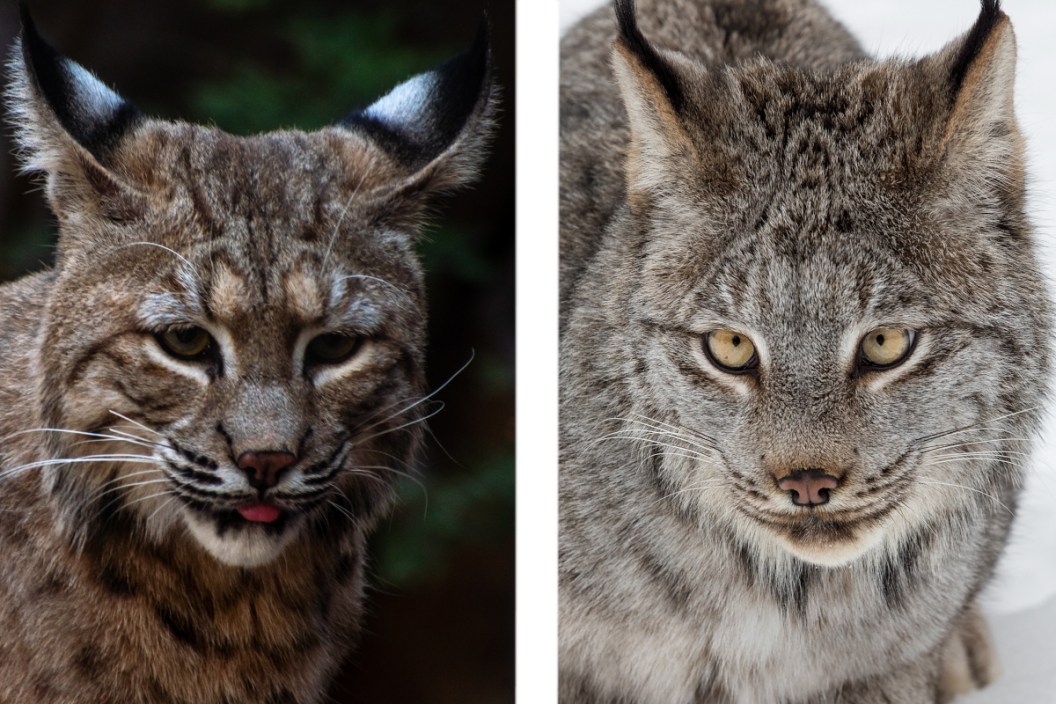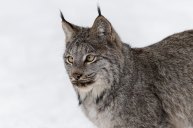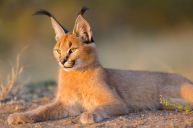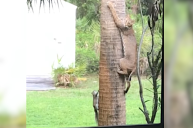North America is home to dozens of fascinating animal species and two carnivores that often fly under the radar are the bobcat and the lynx. These wild cats are much larger than your standard housecat, but smaller than a cougar or mountain lion. Sightings of these animals are often brief, with the person catching just a slight glance of it as it runs away back into the wilds. Encounters with these shy animals often leave a person scratching their head wondering which wild cat species it was they just witnessed. These are the key differences in range, appearance, and behavior to look for when you're in big cat country. As similar as the two species are, there are also many differences that set them apart from one another.
Ranges
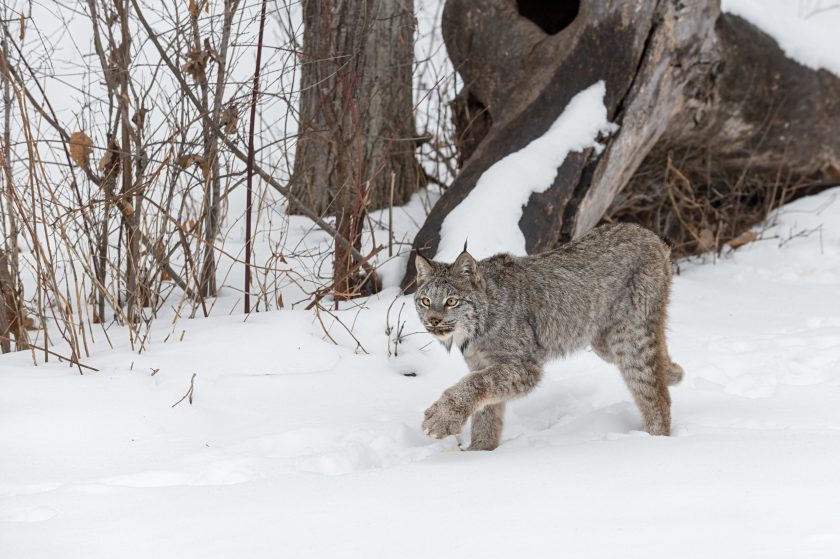
While technically, both animals are part of the same family, their ranges do not overlap as much as one might think. That's good news for identification, as you can usually eliminate one or another as a possibility. There are a few different species of lynx including the Eurasian lynx, native to Europe and parts of Asia, and the Iberian lynx which is native to parts of southern Europe. However, the only one you're going to see in North America is the Canada lynx (Lynx canadensis), as seen above. And, as the name suggests, you're going to mostly see it in the great white north. There are a few different subspecies of bobcat, but the differences are minute at best.
According to the U.S. Fish and Wildlife Service, approximately 98 percent of the Canadian lynx's range is across Alaska and most of Canada. Within in the continental U.S., breeding populations are scattered. The northernmost part of Maine, northwest Montana and Idaho, north central Washington, and parts of Colorado. There are a few other scattered pockets in places like Yellowstone, Michigan's isolated Isle Royale and parts of northern New Hampshire.
Bobcats (Lynx rufus) are a whole other story. These wild felines have a much more widespread range throughout the continental United States. If you see a large wild cat in the south, particularly parts of Florida, Texas and down into Mexico, odds are you saw a bobcat. Populations of bobcat tend to thin out a bit on the east coast and parts of the Midwest, but most western and northern states are home for the animals.
Aside from range, you're also more likely to see a bobcat simply because there's a greater population density. Unfortunately, the U.S. Fish and Wildlife Service considers lynx an endangered species due to years of overharvesting and habitat loss. The odds simply aren't in your favor unless you know where to look for them, and these shy cats don't make that easy in any way.
The USFWS also says that lynx populations vary greatly depending on how the population of snowshoe hare is doing. This is obviously because the hare is a favorite food source. In general, the better the hares are faring, the more lynx thrive. Strangely enough, the population of these rabbits seems to ebb and flow over time, and lynx populations simultaneously rise and fall perfectly alongside it. There is no question the snowshoe hare is a vital natural resource for the lynx and this relationship has sparked tons of interest in the scientific community, especially those who specialize in studying the populations of predators and prey.
Physical Differences
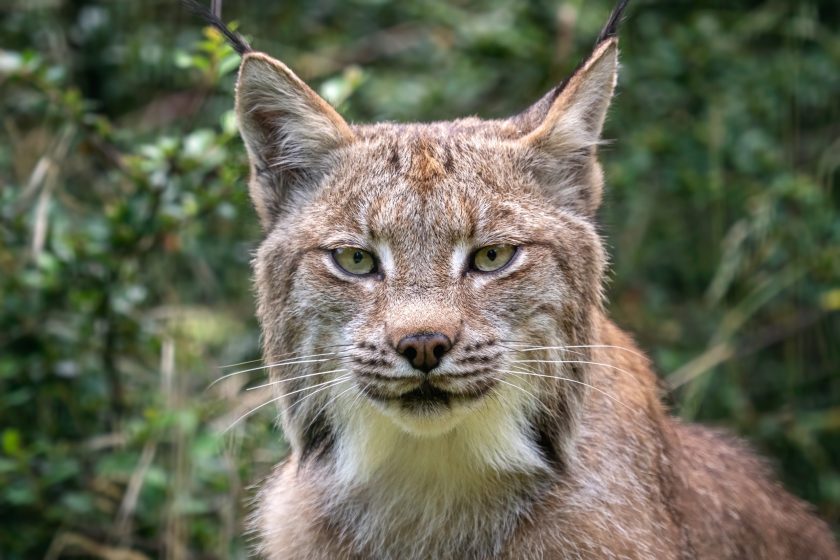
These two animals look strikingly similar, which makes it harder to differentiate between them at times. One thing to consider is that the lynx usually grows slightly larger than the bobcat. The size of the animal is going to vary based on where they are found and food natural resources on hand. Bobcats and lynx usually fall somewhere in the 15 to 30-pound range. A few exceptional bobcats over 50 pounds have been found, so it is best to not judge on size alone. Look for white spots near the ears on bobcats and an overall smaller face. The lynx reminds us of a long-haired Maine coon cat.
The biggest thing that sets these animals apart is the ear tufts and facial ruffs. Both animals can have these features. However, the ear tufts are usually darker and more pronounced on a lynx than a bobcat. If you see thin, black tufts, it is likely a lynx. Look for white spots on the ears on bobcats and an overall smaller face. The lynx reminds us of a long-haired Maine coon cat. The lynx is better adapted for life in a climate that gets deep snow. As a result, they have longer legs, larger paws, and just an overall beefier appearance. While snowshoe hares are their specialty, this size difference allows the lynx to pounce on larger animals like deer for prey if opportunity presents itself. In addition to smaller paws, a bobcat's feet are usually bare pads. If you can get a close look at the feet, look for fur on the pads. A lynx has an extra layer there to help insulate their feet from long periods in the snow.
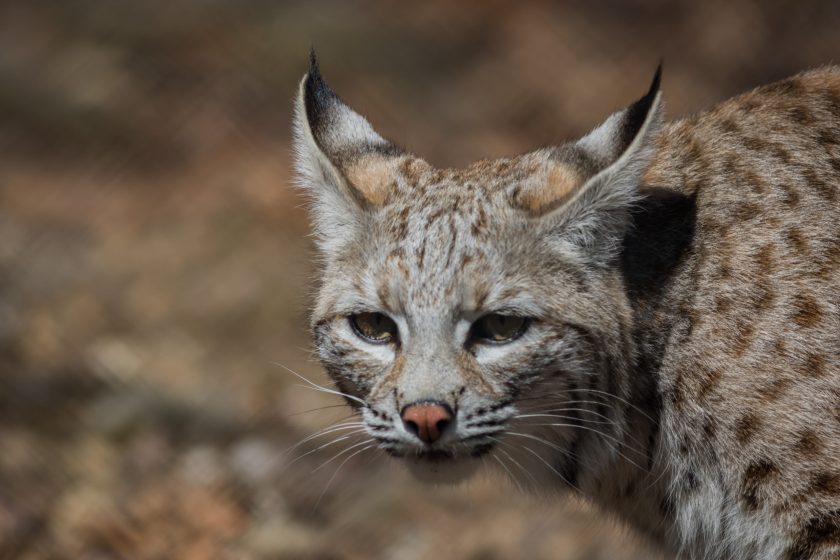
Color of the animals can vary greatly. Bobcats like the one above often have a grey to reddish brown or yellow coat marked with black stripes and black spots. The animal is also often white underneath on its belly. The lynx by comparison, often has a white, golden yellow or brown coat. However, the lynx may or may not have spots. If the animal is unspotted, odds are you're looking at a lynx. Again, because lynx live in more northern climates, they often have longer, thicker fur too to help them survive the cold. That lighter-colored coat also helps the lynx blend into a snowy environment better. The appearance of a bobcat's coat often mirrors that of what you'd see in a domestic shorthair cat for the most part.
Another thing to look at are the short tails of these animals. Both are small, but a bobcat's tail is usually slightly longer while a lynx's is more stubby in nature. Both animals usually have a black tip on their tail, however a bobcat's tail is usually banded while a lynx's tail is not.
Behavior and Prey
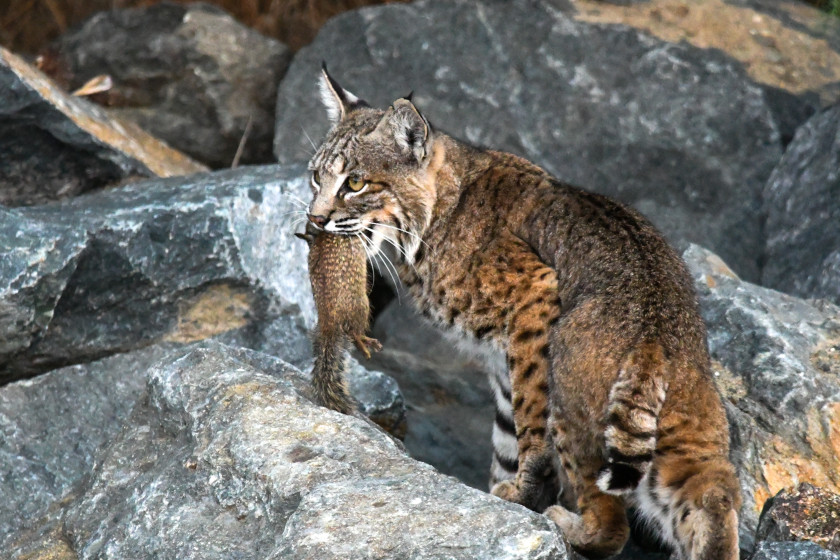
Armand Bracamonte via Getty Images
Both cats are rather shy and reclusive. Like mountain lions, most will go out of their way to avoid humans at all costs. Both animals are crepuscular in nature. That means they are more active at dawn and twilight hours than midday. Although both are known to adjust their habits in accordance with what their prey are doing. Both animals are wanderers and have huge home ranges that can encompass dozens of square miles or more. Bobcats and lynx are also usually solitary. About the only time you'll see a group is a mother with kittens. Lynx have been recorded hunting together in the past, but such instances seem to be rare.
As far as diet, we already mentioned the snowshoe hare for the lynx, but neither cat is very picky about their prey. On the smaller end, voles, squirrels, rats, rabbits, and mice are common prey items. They also consume a variety of birds, especially ducks and geese when they can catch them.
Larger prey items can include things like deer, pronghorn antelope, feral hogs, wild goats, and sheep. Both cats are more likely to target the young of these species, although there are records of them taking down the adult animals. On the larger end of the prey scale, lynx have been recorded hunting caribou, and bobcats have been recorded killing elk, usually calves. These cats are quite capable of taking down animals that may weigh hundreds of pounds more than they do. It just speaks to the ferocity of these felines.
If you ever see one of these animals in the wild, consider yourself lucky to have spotted one of North America's most elusive and cunning predators.
For more outdoor content from Travis Smola, be sure to follow him on Twitter and Instagram For original videos, check out his Geocaching and Outdoors with Travis YouTube channels.
READ MORE: THE AXIS DEER AND HOW THEY'RE IMPACTING PARTS OF THE UNITED STATES
